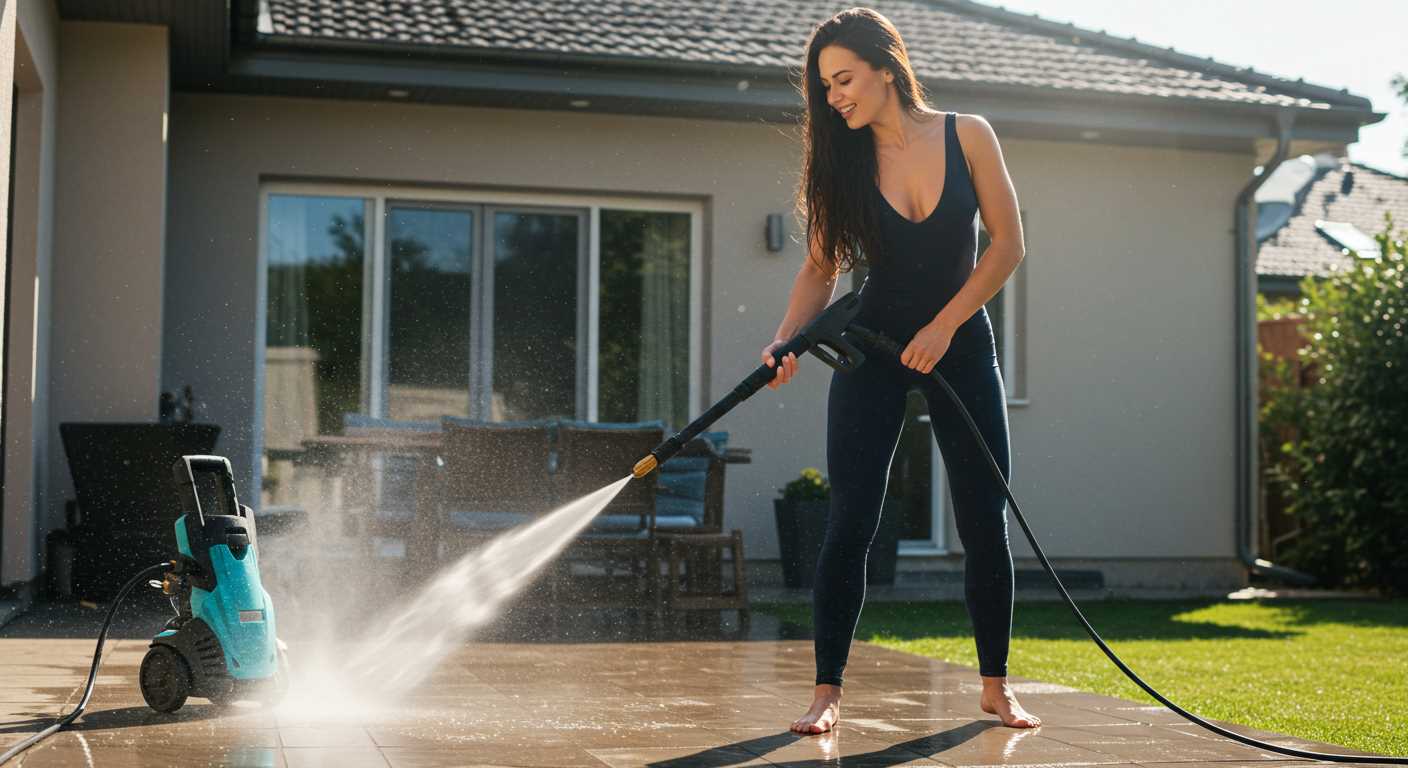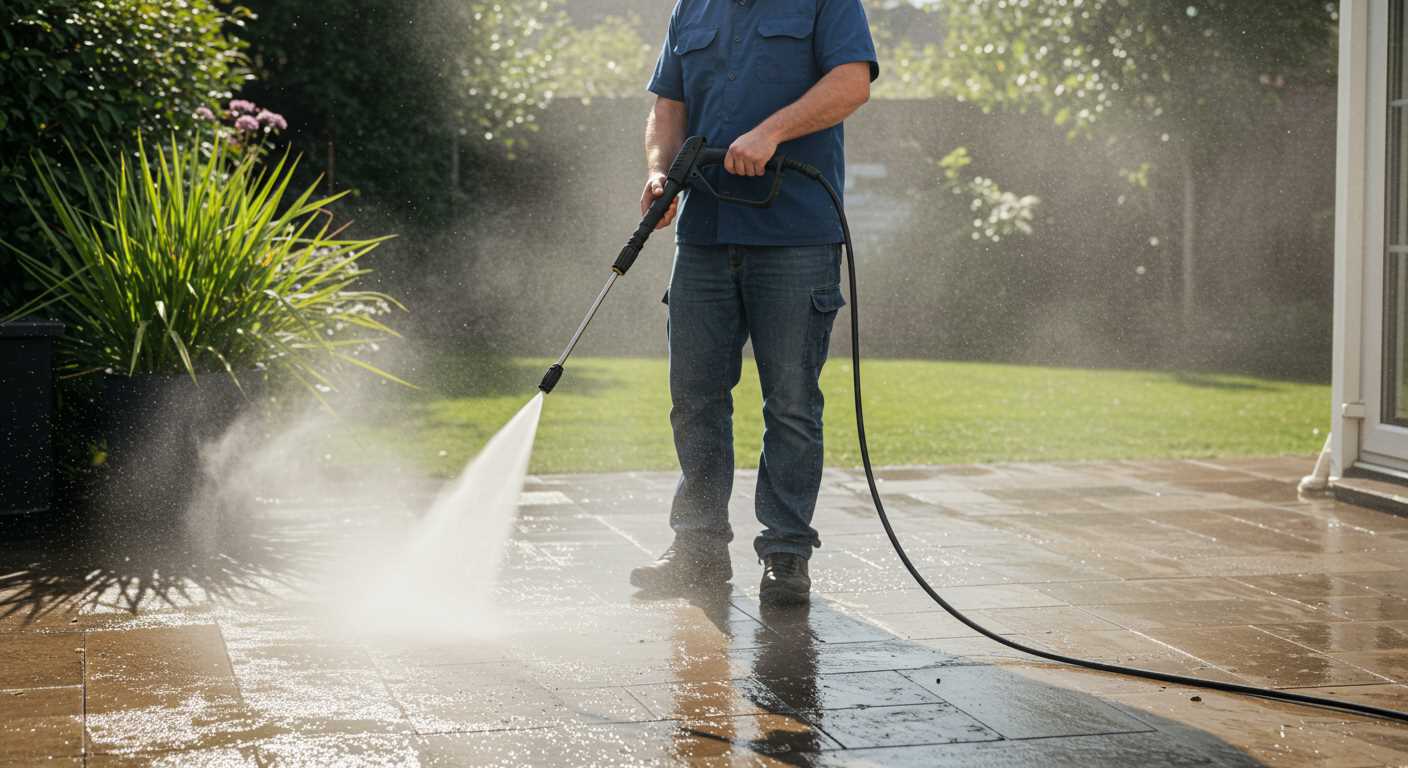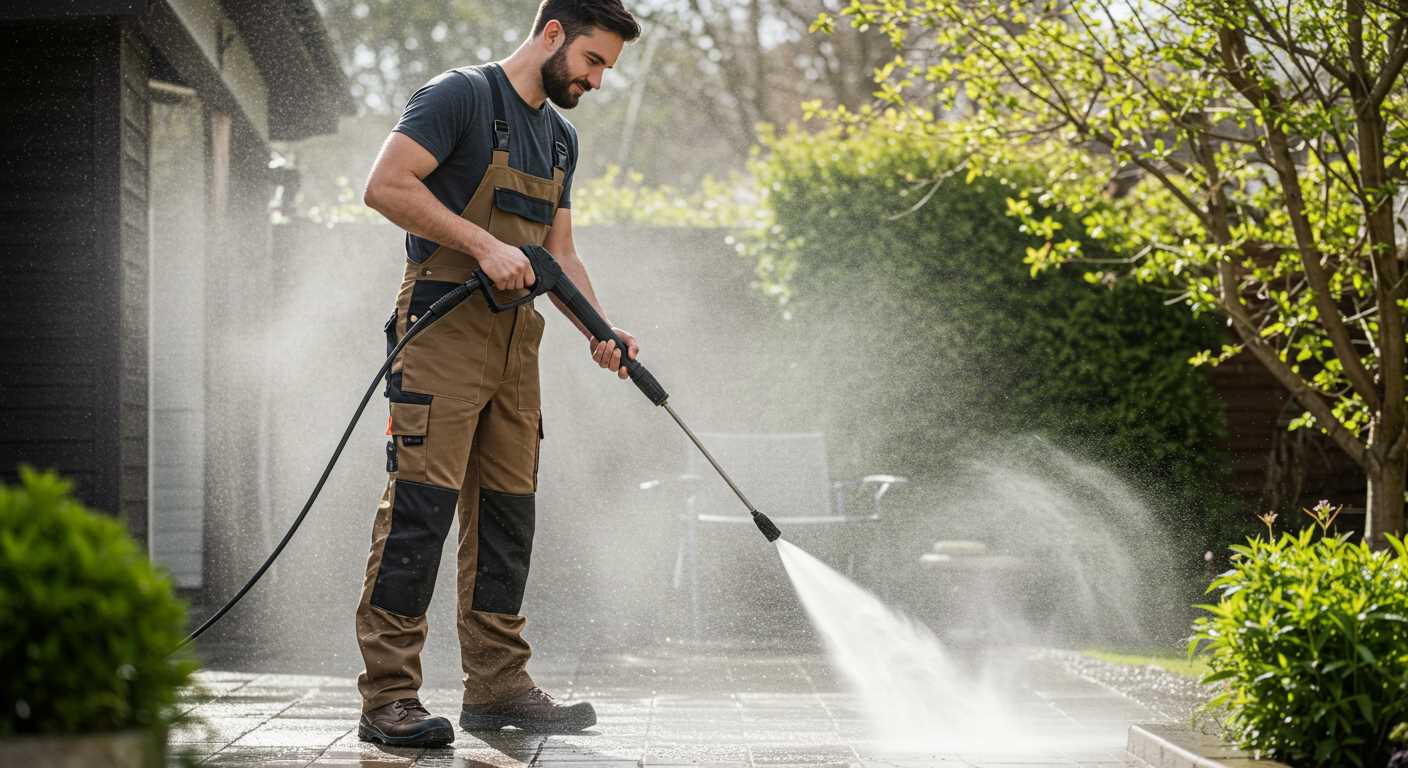



Remove the obstruction by detaching the spray head from the wand. This allows for a thorough examination and a hands-on approach. Utilizing a fine needle or a small drill bit can effectively dislodge any residue trapped in the aperture. Always exercise caution to avoid enlarging or damaging the opening.
Once the tip is clear, soak it in a solution of warm water and mild detergent for about 15 minutes to break down any stubborn substances. After soaking, use a soft brush or cloth to wipe away remaining debris. Rinse it thoroughly under tap water to wash away any cleaning solution.
Before reassembling, inspect the O-ring and any seals for wear and tear. Replacing damaged components can greatly enhance performance and prevent further issues. Securely attach the spray head back to the wand and test your device to ensure it’s functioning optimally.
Cleaning Techniques for Blocked Spraying Device Tips
Begin with detaching the attachment from the hose. Once removed, inspect the tip closely for any visible debris or buildup. A small pin or a paperclip can be effective in dislodging stubborn particles. Insert it gently into the hole to avoid damage.
Next, soak the attachment in a mixture of warm water and vinegar for about 30 minutes. This solution helps dissolve any residue without harsh chemicals. After soaking, scrub the surface with a soft brush to ensure all contaminants are removed.
Rinsing is crucial. Direct water through the opening to ensure all remnants are flushed out. If you notice persistent blockages, consider using a soft bristle cleaning brush, focusing on the orifice carefully.
After reassembly, perform a test run with the cleaning apparatus aimed away from surfaces. This step allows you to check the stream and ensure normal operation before proceeding to your actual cleaning task.
Identifying Symptoms of a Clogged Nozzle
If you notice a noticeable decrease in water flow intensity, the first indicator may be an obstruction. This can manifest as a weak spray pattern that fails to reach desired surfaces.
- Inconsistent Spray: A pattern that oscillates between strong and weak can signal a blockage. If the stream suddenly changes while in use, this requires attention.
- Unusual Noise: Listen for atypical sounds during operation. An irregular rhythm might suggest that the device is struggling due to an impediment.
- Leaks: Water escaping from areas other than the intended spray can indicate a backpressure caused by a blocked exit. Inspect connections for any signs of leaking fluid.
- Excessive Vibrations: If the equipment shakes more than usual, it might be working harder to compensate for reduced flow. This can lead to further complications if not addressed.
It’s prudent to act quickly upon noticing these signs, as neglecting them may lead to more severe repairs and reduced performance over time.
Gathering Necessary Cleaning Tools
First, assemble a few key items to tackle the maintenance effectively. Here’s what you need:
- Safety Gear: Always wear protective eyewear and gloves to shield against debris.
- Needle or Wire Tool: A thin wire or needle is essential for unclogging small passages.
- Small Brush: Use an old toothbrush or a dedicated nozzle cleaning brush for scrubbing away stubborn residue.
- Container: A bucket to hold cleaning solutions or water facilitates the rinsing process.
- Cleaning Solutions: Choose a degreaser or detergent that is safe for your equipment.
- Compressed Air Canister: For blowing out debris lodged deep inside.
With these tools at hand, troubleshooting becomes straightforward, allowing for a successful restoration of your equipment’s functionality.
Preparing the Workspace
Ensure a clean and well-lit area to prevent losing small components. A flat surface provides stability while you work, enhancing safety and efficiency.
Maintenance Tips
Regular checks on these cleaning supplies ensure readiness. Storing tools in a designated spot keeps the workspace organised and saves time during emergencies.
Disconnecting the Equipment Safely

Before proceeding with any maintenance, ensure you turn off the device and unplug it from the electrical source to eliminate the risk of accidental activation. If the model operates on fuel, switch off the fuel supply and allow the engine to cool before handling.
Next, detach the hose from the main unit. This step prevents any pressurised water from escaping unexpectedly while you work. Always be cautious of residual pressure; a quick release of the gun can help to ensure that no pressure remains in the system.
After disconnecting the hose, remove the attachment at the end. It’s advisable to handle these components gently to avoid damaging any threads or fittings. Store them properly to prevent cross-contamination with dirt or debris.
For models that include a detergent reservoir, ensure it is emptied and rinsed to avoid any leftover chemicals affecting future use. Drain any remaining water from the system by keeping the valves open. Following these steps ensures a safe environment for cleaning the obstruction.
Removing the Nozzle for Cleaning
Firstly, ensure that the equipment is disconnected from its power source to prevent any accidents. Next, locate the retaining clip or the screw that holds the attachment in place. Depending on the design, this may require a simple twist or a turn with an appropriate screwdriver.
If you encounter resistance, use a pair of pliers to gently grip the base while twisting the attachment to loosen it. Take care not to apply too much force to avoid damaging any components. Once detached, inspect the part closely for any visible debris.
It’s advisable to have a clean workspace, as you might need to place the parts on a soft cloth to prevent scratches. Store the removed piece in a safe location while you undertake the cleaning steps. Keeping everything organised will streamline the process.
Lastly, before reattaching, ensure all surfaces are free from any remnants of dirt or build-up. A clean fit will help maintain optimal performance upon reassembly.
Using Water to Flush Out Debris
Attach a standard hose to the outlet end of the cleaning tool. Turn on the water supply to build pressure within the system. This step assists in dislodging any blockages residing in the tip.
Next, spray water through the attachment in a controlled manner. This will help clear away any small particles or hardened grime. If you encounter resistance, gradually increase the water flow while ensuring it remains manageable.
Optimising Water Flow

Ensure the water source you’re using has adequate pressure. This enhances the flushing capability significantly. I recommend checking local water pressure ratings. If your setup allows, consider using a nozzle that adjusts the spray pattern for better precision in directing flow.
Post-Flushing Check
After flushing, visually inspect the attachment for any remaining obstructions. If necessary, repeat the flushing process. It’s important to confirm that the water flows freely before reconnecting any components back to the device.
Cleaning with a Soft Brush and Cleaners
Utilising a soft brush along with appropriate cleaning agents streamlines the process of maintaining your tool’s spray attachment. Opt for a non-abrasive brush to avoid scratching surfaces. A gentle bristle brush works well in dislodging accumulated dirt and debris without causing damage.
Select a cleaner specifically formulated for removal of tough deposits. Look for options that target mineral build-up and oils, as these are common culprits in obstructed apertures. Dilute the cleaner according to the manufacturer’s instructions to ensure optimal performance without risking harm to the component.
Step-by-Step Cleaning Process

Begin by applying the cleaning solution to the affected area, ensuring thorough coverage. Allow it to sit for a few minutes to loosen stubborn residue. Using the soft brush, gently scrub the surface, focusing on areas where blockages are present. Regularly rinse the brush in clean water to avoid transferring debris back onto the attachment.
Final Rinse
Conclude the process with a comprehensive rinse using clean water. This step is critical to ensure all cleaning agents and loosened sediment are completely removed. Inspect for remaining blockages and repeat the brushing process if necessary. Following these practices will maintain peak performance of the spray attachment and prolong its lifespan.
Reassembling the Nozzle and Testing
Align the parts carefully, ensuring that any seals are properly fitted to prevent leaks. Use the appropriate tools to tighten screws and connections to avoid damage from overtightening. When reassembling, pay close attention to the orientation of each component, as incorrect placement can impede functionality.
Once everything is back in place, proceed to reconnect all hoses and the power source following manufacturer guidelines. Before beginning operation, inspect all connections for signs of leaks or misalignment. Make sure the unit is on a flat surface to prevent movement during testing.
With the unit prepared, perform a quick initial test without any attachments to monitor for leaks or unusual noises. If everything appears normal, attach the spray wand and select the desired setting. Conduct a short run with water to assess pressure and performance, aiming the spray away from yourself and any fragile surfaces.
After a successful test, examine the spray pattern. A clear, even stream indicates effective functionality, while erratic spraying may require further inspection. If issues persist, consider disassembling once more to ensure all components are correctly placed and secure.
Preventative Tips to Avoid Future Clogs
Maintain the quality of your equipment by using clean water. Always ensure the source of your fluid is free from debris and contaminants. If possible, use a water filter to eliminate particles before they reach your machinery.
Regularly inspect the connections and hoses. A worn or damaged hose can introduce sediments that might obstruct your spray head. Replace any damaged parts promptly to ensure optimal performance.
After every use, allow the system to run briefly with clear water to flush out any remaining debris. This simple practice helps in preventing buildup that can lead to a blockage.
Avoid Chemical Buildup
If you use detergents or cleaning agents, ensure they are specifically designed for your machine. Improper chemicals can leave residue that solidifies, causing issues as time progresses. Always follow the manufacturer’s recommendations for soaps and additives.
Proper Storage Techniques
Store the unit in a clean, dry area away from extreme temperatures. Keeping it in a controlled environment can help avoid deterioration of seals and connections that may contribute to malfunctions. Make it a habit to regularly check for signs of wear during storage checks.
| Tip | Description |
|---|---|
| Use Clean Water | Always source water free from debris. |
| Inspect Hoses | Check for damage regularly. |
| Flush After Use | Run clear water briefly after each session. |
| Proper Chemicals | Use only recommended cleaning agents. |
| Store Correctly | Keep in a controlled environment away from harsh conditions. |
Implementing these practices into your routine not only enhances performance but can also extend the lifespan of your equipment. Following these guidelines, you’ll significantly reduce the chances of encountering blockages in the future.









